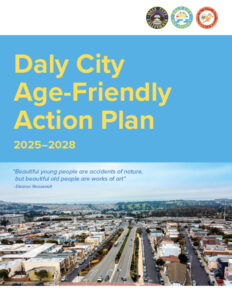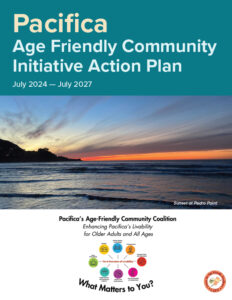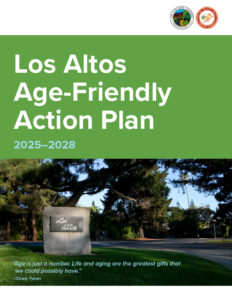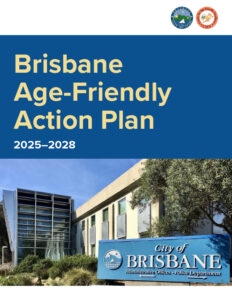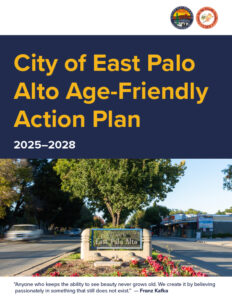Advancing Livable Communities
for All Generations
Center for Age-Friendly Excellence is advancing our understanding of Age-Friendly cities and communities. CAFE intends to drive transformational change in creating healthy, active, sustainable, and engaged intergenerational communities.
What are the benefits and values of an Age-Friendly City?

Creating an age-friendly city (AFC) involves developing an aging lens, that is, education and understanding the needs of older persons and persons with disabilities. It means grasping the significantly aging and changing of human populations in our communities. Short term, it means looking for economical and simple ways to make our communities more age-friendly: brighter lightbulbs, larger font signage, hand rails, fixing holes in sidewalks, etc. Longer range, it means, designing and modifying urban environments to be inclusive and accessible for people of all ages, particularly addressing the needs of older adults. The benefits of an age-friendly city are numerous and contribute to the overall well-being and quality of life for its residents. Here are some key advantages:
1. Improved Quality of Life:
Age-friendly cities enhance the overall quality of life for residents, including older adults. Accessible public spaces, transportation, and housing contribute to a more comfortable and enjoyable living environment for all ages. Simply helping qualified older adults apply for senior housing can have an impact when housing stock is scarce.
2. Social Inclusion:
Designing communities with the needs of older adults in mind fosters social inclusion and interaction. Spaces that encourage community engagement help combat social isolation and loneliness. Isolation and loneliness have been identified as an epidemic by the Surgeon General. All ages benefit from meaningful intergenerational programming.
3. Health and Well-Being:
Access to recreational spaces, healthcare facilities, and services that promote physical and mental well-being positively impact the health of older residents. Opportunities for physical activity and socialization can contribute to a healthier lifestyle. Healthy communities benefit everyone and lessen the burdens on public services and funds.
4. Safety and Security:
Age-friendly cities prioritize safety for all residents, especially older adults. Well-lit streets, clear signage, and accessible infrastructure reduce the risk of accidents and enhance personal security. Safe communities are a benefit to all ages and reduce the burden on clinics, hospitals, police and firefighters.
5. Accessible Transportation:
Adequate and accessible transportation options are crucial for older adults to maintain their independence. Age-friendly cities often have well-planned public transportation systems and pedestrian-friendly infrastructure. Many communities are investing in dial a ride, taxi vouchers and reduced Uber and Lyft charges for older individuals.
6. Housing Options:
Cities that prioritize age-friendly design consider housing needs, including affordable and accessible housing options for older adults. This helps people age in place and maintain connections to their communities. Many communities are organizing housing fix up, clean up, and minor remodeling programs for older people and persons with disabilities.

7. Employment and Volunteering Opportunities:
Age-friendly cities promote opportunities for older adults to continue working or engage in volunteer activities, contributing to their sense of purpose and community involvement. Older adults represent a golden human resource to many organizations.
8. Cultural and Recreational Opportunities:
Ensuring that cultural and recreational activities are accessible to people of all ages promotes active and engaged communities. Parks, libraries, and cultural institutions that cater to diverse age groups contribute to a vibrant community life. Local businesses benefit by pedestrian friendly and walkable communities.
9. Age-Friendly Services:
Cities that are age-friendly often offer services tailored to the needs of older adults, such as healthcare programs, home care services, and support networks, making it easier for older residents to access the assistance they require. Understanding and supporting Area Agency on Aging programs and services for older persons is key to maximizing impact of social services.
10. Economic Benefits:
An age-friendly city can attract retirees and older individuals, contributing to the local economy. This demographic often has disposable income and can become a significant market for local businesses and services. The AARP Livable Community Index ranks cities across the US in terms of their age friendliness. Older adults control vast wealth in the US and attracting and engaging this population to communities and promoting their aging in place keeps families and communities in place and enriches economic and social life. City and County elected officials can benefit by their knowledge and support of age-friendly initiatives as it demonstrates an informed and enlightened approach to leadership and the latest evidence on creating community. Communities can make more informed and targeted budgetary decisions about the actual needs for programs/services; what actually works and where. AFC tend to integrate the resources of older persons into the local economy, attract public-private partnerships and attract grant funding for a variety of community-building projects.



